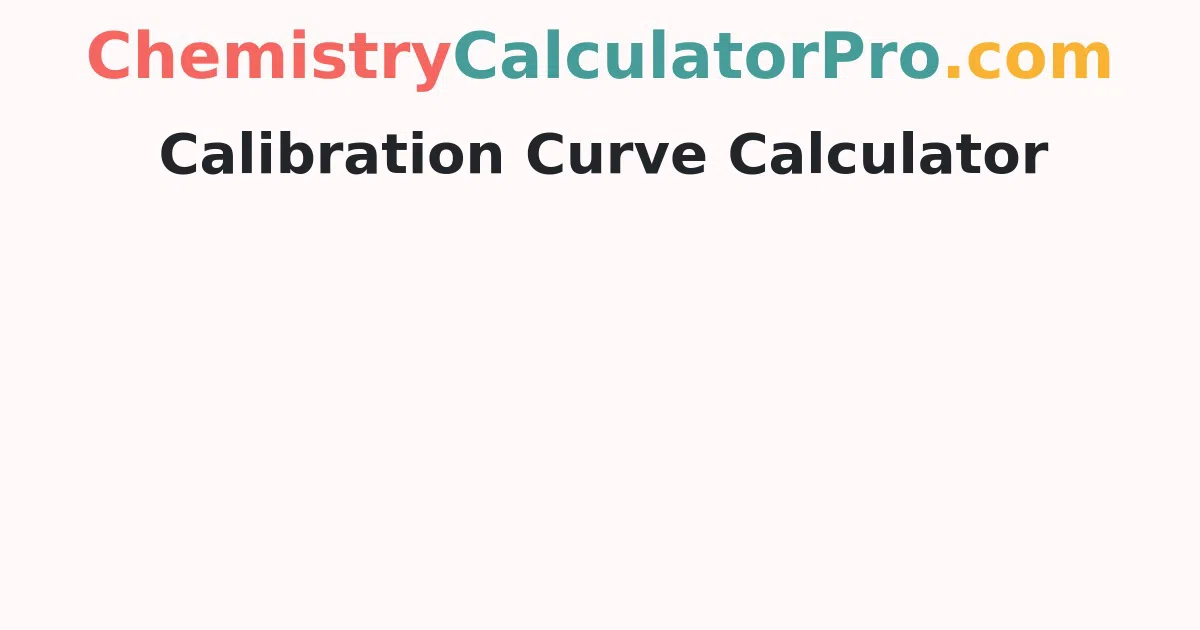Calibration Curve Calculator
Make use of this free and user-friendly Calibration Curve Calculator to find the concentration of a sample. All you need to do is just enter sensitivity, background, and signal values observed from the experiment that has matrix effects. Hit the calculate button to obtain the sample concentration with a detailed explanation.
What is the Calibration Curve?
Calibration is a technique to ensure that the instrument/method gives accurate results. It is the process of correct analysis of the relation between the analyte concentration and the instrument signal used.
The calibration curve is obtained by testing the few samples with the known concentration with the desired instrument, and then fitting the results in the operations of the model. This curve plot represents the instrumental response to the analyte and allows to estimate the unknown sample concentration.
The calibration curves are categorised into different types based on the kind of result expected from the model:
- Linear with zero intercepts: The standard addition technique.
- Exponential:
- Linear with non-null intercept: The working curve technique
- Logarithmic:
- Polynomial:
- Power: The concentration is raised to the power of an exponent.
How to Use Standard Addition Method?
The standard method is used to get the concentration value. This technique is used when the sample with a matrix gives a constant background signal in the measurement.
To build the calibration curve, take one or more standard samples with known concentrations. A complex validation process is required to be known.
Plot the curve with the known data by taking concentration on the x-axis and signal on the y-axis. The plotted data represents a linear regression model is used to fit the data.
The calibration curve equation becomes: y = ax + b
Where,
a is the angular coefficient of the line
b is the background signal of the matrix
y is the instrumental response
x is the concentration
How to Use Calibration Curve to find Concentration?
Below mentioned are the steps to find the concentration of the unknown sample with a calibration curve.
- Get signal, sensitivity, and background details.
- Subtract background from the signal.
- Divide it by the sensitivity.
- The result is the concentration.
Example:
Solve the concentration of the sample with calibration equation y = 0.5x + 0.1
Solution:
Given calibration equation is y = 0.5x + 0.1
x = (y - 0.1)/0.5
Let us say the instrumental response of the sample is 2.1
x = (2.1 - 0.1)/0.5
= 2/0.5 = 4
FAQ's on Calibration Curve Calculator
1. How to use the calibration curve to find concentration?
To find the unknown sample concentration, write an equation that represents the calibration curve. Measure the instrumental response from the solution. Find parameters such as sensitivity and background. Subtract the background from the response and divide it by the sensitivity to get the concentration.
2. What is Beer's Law calibration curve?
Beer's law is represented by a linear function, which relates absorbance to concentration. The slope of the calibration curve is equal to the cuvette width times molar attenuation coefficient.
3. How to create a calibration curve in excel?
Follow these simple steps to create a calibration curve in excel.
- Write concentration, and response details on the sheet.
- Draw a graph by taking concentration on the x-axis, and response on the y-axis.
- Plot the points and join them to get the equation.
4. What is the calibration curve?
A calibration curve is a regression model that is used to estimate the unknown concentration of analytes of interest based on the response of the instrument to the unknown standards.
